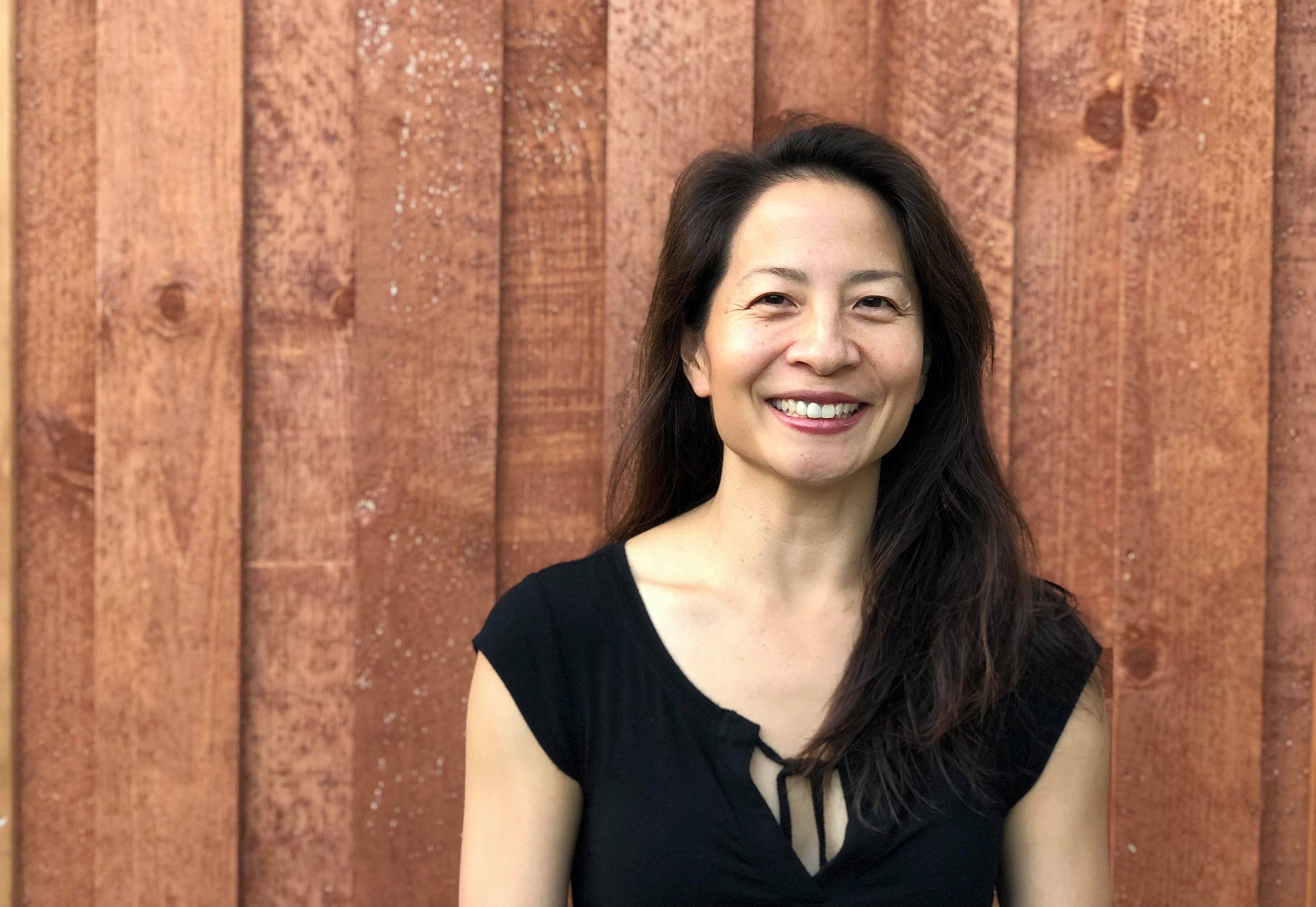
This May, Lenora Lee Dance Company in San Francisco is returning to the US Immigration Station on Angel Island State Park, in San Francisco Bay for a remount of their 2017 production, Within These Walls, as well as the premiere of its sequel Dreams of Flight. Participants will travel by ferry to the historic two-story immigration station, for a site-specific, site-responsive dance performance, dedicated to the 170,000 Chinese immigrants detained, interrogated, and processed there as a result of the Chinese Exclusion Act.
We spoke to Artistic Director, Lenora Lee, about Within These Walls, Dreams of Flight, and her approach to producing site-specific and immersive theatre and dance.
No Proscenium (NP): Can you tell us a little bit about yourself and your background in immersive art?
Lenora Lee (LL): Sure, I am a San Francisco native and have been in the field for about 21 years. I have been running a dance company for the last 12 years. I’ve been doing site-specific interdisciplinary work since college, and then I’ve been doing immersive work since 2015.
NP: What in a nutshell is this project about?
LL: This piece, Within these Walls, was created in 2017, and it was inspired by the experiences of those detained, interrogated and processed at the US immigration Station, Angel Island State Park. Between 1910 and 1940, there were about a million immigrants who were processed there, and over 100,000 of them were Chinese. Because of the Chinese exclusion act in place between 1882 and 1943, the Chinese were detained for much longer and held under great scrutiny for much longer interrogations than the other immigrants. The normal processing time was two to three days. However, for the Chinese it was days, weeks, months, and sometimes over two years. So I wanted to create a piece that was dedicated to those who were processed there, particularly the Chinese.
Three of my grandparents were held and processed at the station. And so I did a lot of genealogical research and was able to include some of their immigration paperwork and interrogation questions within the piece — both as visual design as well as one of the characters portrayed who was inspired by my maternal grandmother.
NP: What about the current moment and its sequel timely and urgent?
LL: When we first created it and opened it in 2017, I think we were all moved by the audience responses and the impact we felt, given the anti-immigrant sentiment that’s apparent in the country. And because the Chinese exclusion act was the first piece of legislation that limited or restricted the immigration of anyone from another country to the US, it really set precedent for anti-immigrant laws to come.
I feel that these pieces are our contribution to the dialogue on the anti-immigrant sentiment in the country.

NP: How is the venue incorporated into the experience?
LL: The station itself has such a rich history. There was so much that occurred there that I felt like the piece really needed to be created in and live there during its duration. The station was actually saved from being demolished due to the over 200 poems that were inscribed in the walls of the barracks, which were written in Chinese by the detainees who had a long, extensive stays there. These poems on the wall really described their experiences — their hopes and dreams for immigrating, what life would be like, what their hopes for life would be like in the United States.
There were natural disasters in the areas of southern China where a lot of folks came from, and there was a lot of political unrest. China had been through two opium wars that were initiated by the British. There was a lot that was going on that they were trying to deal with. I think the idea of creating the piece was also to give a more compassionate perspective on the immigrant experience. Why do people migrate? Why do people leave their home country? Part of what I was hoping to bring about through the work, was a different, innovative, creative way of portraying the immigrant perspective.
Get Brian Resler’s stories in your inbox
Join Medium for free to get updates from this writer.
SubscribeSubscribe
NP: For this show the audience will have to travel by boat and possibly shuttle to be on the island for the duration of the show. What do you feel is gained, and what is sacrificed when an audience is asked to make such a commitment to seeing the work?
LL: For me to have the opportunity to take a look at the history of the location, its architecture, how we can build performance in multiple spaces or how we can utilize many different rooms. That the history and the architecture of the space can provide a very rich environment for narratives and stories to be housed and unfolded through performance.
I think the folks who end up coming out to Angel Island are either very interested in traveling there or aren’t familiar with the immigration station there. There were a lot of folks who had never seen our work before who attended this performance. Some of them have no connection to the Chinese American experience at Angel Island, but they said, once they stepped into the station, they could feel the weight of the experiences there because all of the history is on hand, and the stories, the narratives, are written in the wall — inscribed in the wall. It was very resonant.
I think people appreciated the experience. In terms of what could be lost in the fact that at the station that maybe some people would not take the trip out there — take the ferry ride out there. I think that some of the folks who normally see my performances actually didn’t go to this one, but I have a lot of folks who have never seen the work.
NP: How are you designing around audience agency and consent and safety?
LL: In the opening speech, the characters or the artist who are playing staff members there at the station are giving instructions as to what’s possible and what’s not possible for the audience to do. We haven’t come across any issues in regards to how much audiences are participating or how much performers are interacting with the audience. Generally the responses that we’ve received already are such that sometimes the audience members felt compelled to almost step in between two characters and either prevent what was going on or to provide support.
NP: What has the audience response been like?
LL: I can share one story with you. During a performance, there was a young boy who was probably four years old who, during an interrogation scene, came straight up to the table, put his toy car down and just stood at the corner of the table while the interrogation was occurring. And that was so refreshing to witness how engaged this child was in what was going on and how uninhibited this being was. They hadn’t been trained by society in terms of what is appropriate and not appropriate, space between you and other people or involvement within a conversation. And that was fascinating. He didn’t budge. He didn’t move until the actors actually got up and started dancing around the table. It was a very refreshing to see something like that and that level of comfort that this child had in engaging.

NP: Who would you say is the ideal audience member for the show?
LL: I feel it is open and broad and speaks to different generations. It’s ADA accessible. So we’ve had people who were on walkers and needed canes, and there is an elevator and ramp assistance for those who are in wheelchairs.
There is some voiceover text and poetry that is in English, but I feel that dance is such a universal mode of communication that it really crosses across cultures. It bypasses verbal linguistic language so that we can convey through the body a much more nuanced, much more visceral type of felt experience.
NP: What do you hope participants take from the experience?
LL: I would like folks to be interested in knowing more about the immigration station and the history of the Chinese during that time. I’d like them to be able to see and appreciate a perspective of why people flee their home country for a new life.and seek refuge in the United States. And I would hope that could open up a dialogue around immigration what’s going on in this country right now, because I think that divisiveness occurs when we look at “us” and “them.” Inclusiveness, or a sense of empathy and compassion or understanding one another and each other’s experiences, really has to do with talking about “we.” Understanding that we all have our individual experiences and backgrounds, but that by sharing and communicating that there can be a bridge of understanding so that we as a society can move forward and work together — work towards bettering the situations for those that live here and those that live internationally, how we contribute to the world and society. I know it’s broad and overarching, but I think a lot about the larger scope of things. That’s what I’m interested in.
Within These Walls / Dreams of Flight runs Saturdays and Sundays on Angel Island, San Francisco from May 4 — May 19. Tickets are $30–60.
NoPro is a labor of love made possible by our generous Patreon backers. Join them today!
In addition to the No Proscenium web site, our podcast, and our newsletters, you can find NoPro on Twitter, Facebook, YouTube, Instagram, in the Facebook community Everything Immersive, and on our Slack forum.
Office facilities provided by Thymele Arts, in Los Angeles, CA.















Discussion